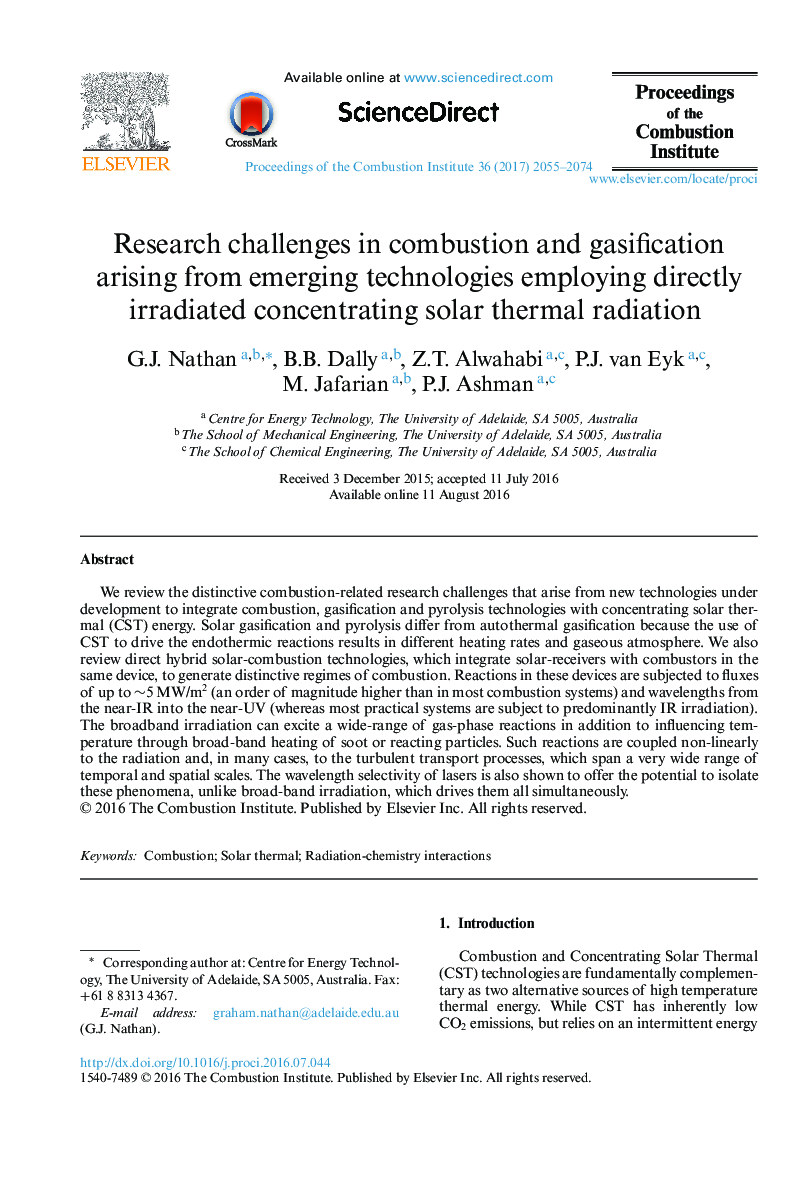| Article ID | Journal | Published Year | Pages | File Type |
|---|---|---|---|---|
| 6478250 | Proceedings of the Combustion Institute | 2017 | 20 Pages |
We review the distinctive combustion-related research challenges that arise from new technologies under development to integrate combustion, gasification and pyrolysis technologies with concentrating solar thermal (CST) energy. Solar gasification and pyrolysis differ from autothermal gasification because the use of CST to drive the endothermic reactions results in different heating rates and gaseous atmosphere. We also review direct hybrid solar-combustion technologies, which integrate solar-receivers with combustors in the same device, to generate distinctive regimes of combustion. Reactions in these devices are subjected to fluxes of up to â¼5Â MW/m2 (an order of magnitude higher than in most combustion systems) and wavelengths from the near-IR into the near-UV (whereas most practical systems are subject to predominantly IR irradiation). The broadband irradiation can excite a wide-range of gas-phase reactions in addition to influencing temperature through broad-band heating of soot or reacting particles. Such reactions are coupled non-linearly to the radiation and, in many cases, to the turbulent transport processes, which span a very wide range of temporal and spatial scales. The wavelength selectivity of lasers is also shown to offer the potential to isolate these phenomena, unlike broad-band irradiation, which drives them all simultaneously.
